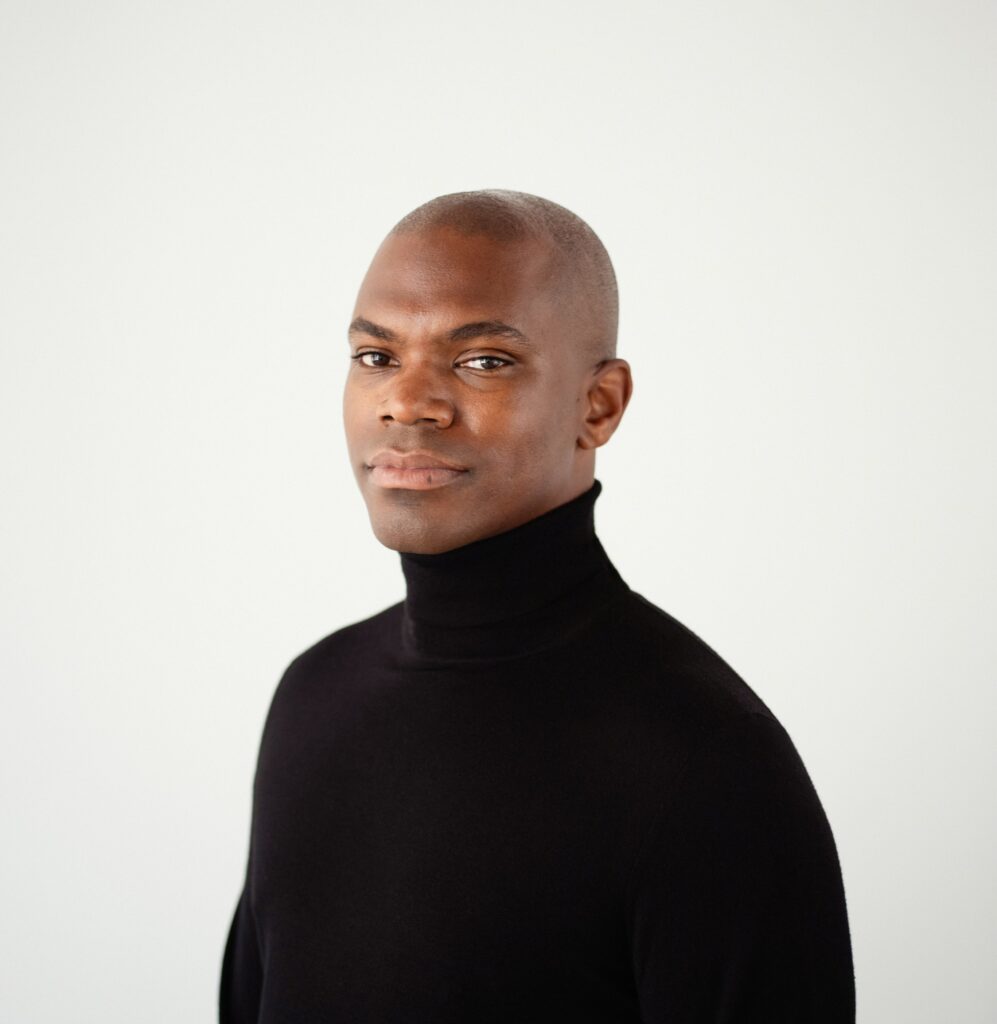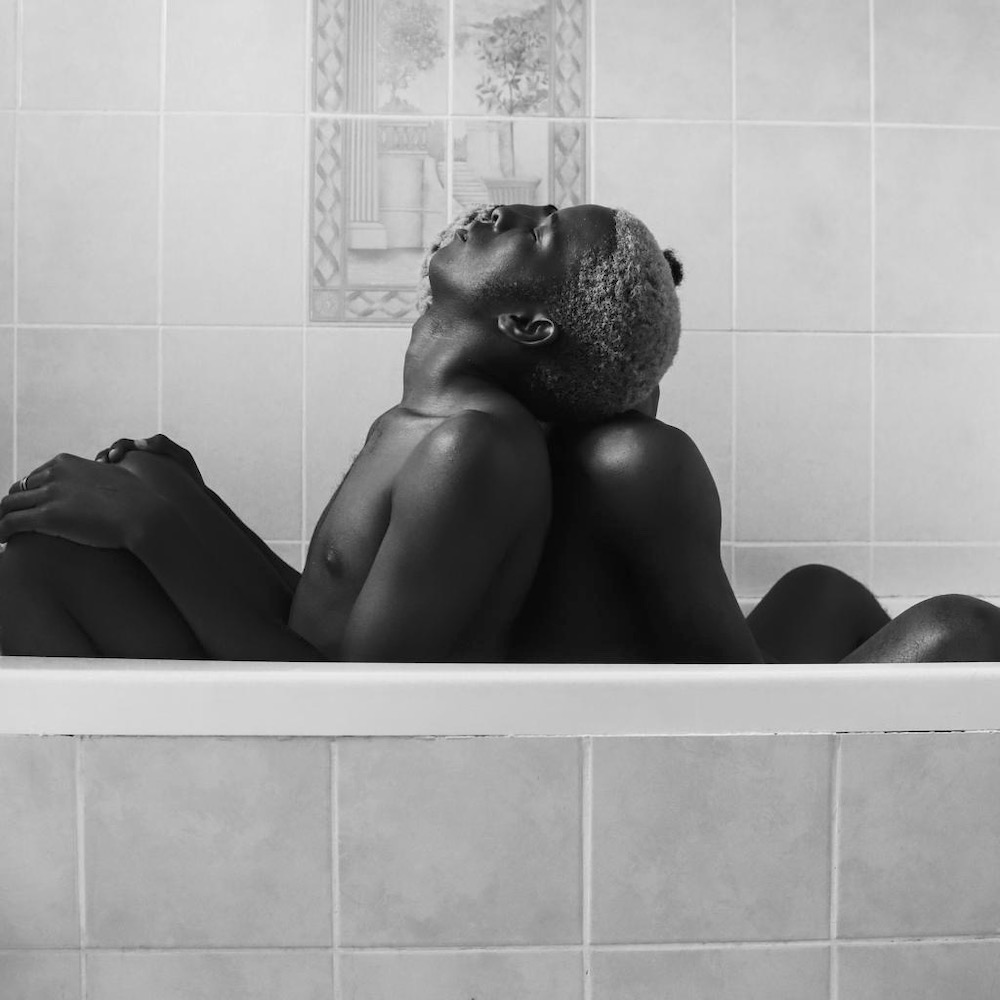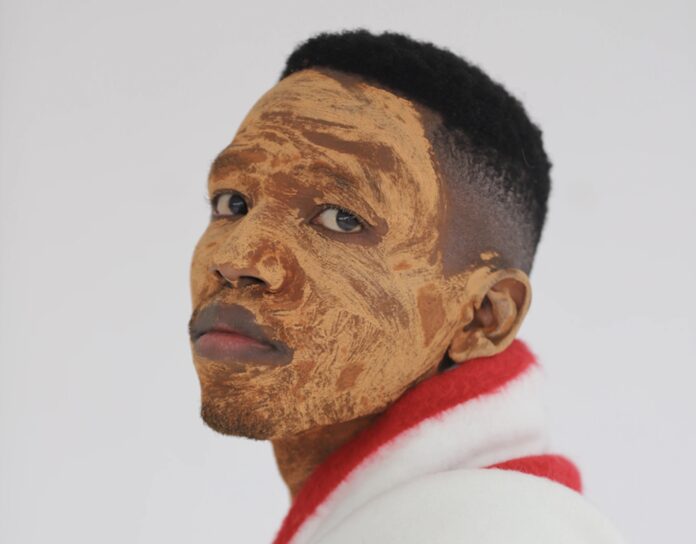Jonathan Carver Moore took an experiential path toward opening an art gallery. The owner of the new Jonathan Carver Moore gallery didn’t study art or even business: He received his bachelor’s in sociology and women’s studies and a master’s in strategic public relations from George Washington University in Washington DC. But he spent his childhood living in different countries around the world due to his father’s career in the military, and he loved visiting museums and taking in art from Manila to Brussels.
When Moore moved to San Francisco seven years ago, he frequented our museums, gallery openings, and annual Open Studios. His master’s in PR kicked in: He wanted to support Bay Area artists, and would introduce them to collectors and gallerists who might be interested in their work.
Moore, who is Black and queer, also felt there was something missing in the art scene and wanted to do something to promote artists who get overlooked. That led to his eponymous gallery on the ground floor of the LINE Hotel on Market Street. At the opening in March, more than 300 people lined up outside to get in. And for his third show, Sanibonani, on view through August 5, Moore scored as curator the prestigious South African photographer and activist, Zanele Muholi. Sanibonani (a Zulu greeting), includes students from the Muholi Art Institute in Cape Town. The artists, all Black and queer, are being shown outside of South Africa for the first time.

The show has deep meaning for Moore, who was inspired to open the gallery after seeing Muholi’s work. He talked to 48 Hills about making that move, how his lens as a gallery owner is unique, and what he loves about art.
48 Hills Could you tell me about deciding to start your own gallery?
JONATHAN CARVER MOORE In 2019, we went to visit my partner’s family in Canada. We had an outing at the Ottawa art gallery, and I actually saw one of Muholi’s photographs. I’d read about Muholi, but I had never seen Muholi’s work in a museum. It just spoke to me, and I think it had a lot to do with the fact that they were someone as dark as me. Then once you read and go deeper into the photos and their work, you realize, they’re not only Black, but they’re queer. And they’re all about visibility. And I feel like it resonated with me similarly to how I wanted these artists in the Bay Area to be more visible.
Then I came back, and I said, “You know, I didn’t go to art school, but I got my master’s degree in strategic public relations.” I really wanted to be a part of the art world and I didn’t know where to start, so I created my own Instagram, and I named it Artucated, from the two words art and educated. What I would do is I would post something new and it was really for me, just to learn—I’m a visual learner. I would post a photograph and then say, “It’s a lithograph,” and then write the definition of a lithograph. I started talking to various artists whose works I would post and feature. I would ask to interview them, and I have many interviews that I’ve never even published or shared. I have an interview I did with Muholi almost three or four years ago now.
48H How did you find the space for the gallery?
JCM Coming out of the pandemic I thought, once we get into the flow of things, I really would like to tap into how I can move from the career that I had in criminal justice and social justice work into the art space and make it official. I bounced, and I went to work at a Bay Area museum, and I was there for nearly a year. But I realized that the art world has so many challenges and there’s just not a lot of visibility for particular people to exist in that space.
From shopping around artists before and introducing them to people—and with a background in sales in my previous life—I thought, I’m going to figure out what the next step would be. Working for the museum ended up being a great catalyst for me; it made me realize that I have what it takes for me to go off and do my own thing. And why am I not doing it? And at the time, there is no one who’s doing what I want to do with the lens that I have, right? We all have our own unique experiences and perspectives. Why am I waiting?
I started looking at spaces, then by happenstance, I met with the creative director of the LINE Hotel, who’s based out of Los Angeles. A colleague of his, who used to work at the Proper Hotel, where I curated a show, said, “You need to meet my colleague, he’s really interested in making this hotel in San Francisco be a hub for art, and I told him about the events that you and I have done together.”
When he was here visiting, he said, “Hey, I know you’re really tapped in. We’re actually looking for someone to be on the ground floor on Turk or Market, and we were hoping that would be a gallery. Do you know anyone?” At the time, I was still working full time, so I was trying to keep pretty close to the vest because I wanted to make sure, is this a move that I wanted to do? I said, “Oh, I might know someone.” Of course, that someone was me.
I was in contract with them by September, early October. There was nothing in that space. So from flooring and the walls to the HVAC and the bathroom, that is all something that we worked on together. I took it on because I believe in what needs to happen in San Francisco, and of course, I believe in myself. I have a vision for the arts scene, and I’m happy now to be a part of it.

48H Where did your passion for art come from?
JCM My mom was the one who was always taking me to museums. When my father would be traveling overseas and working, we’d be in Singapore or visiting another country in Europe, that’s where I found myself in the art scene with my mom. She believes in exposing me to everything around me, art being part of that. But I liked things that really made me think, especially when you look at something, and on the surface, it might seem so beautiful—for example, Muholi’s photographs. Muholi and I have had extensive conversations about how the images are so striking, but behind the photograph itself, there’s actually a huge story being told, and sometimes a lot of them are painful.
So, when I would go into museums, while something seems so beautiful and aesthetically pleasing, you just don’t know what you’re looking at. I love to go down almost a rabbit hole or just dig even deeper, and then understanding the artist’s point of view and perspective, or guessing what it could be. And then once I read more about them and find out, it either could be something that’s aligned or something that’s completely different with what I thought. The element of surprise and learning about what’s behind the painting, the photograph, the sculpture—I love that. It’s somewhat unpredictable. Some things are right on the nose, but then some are completely not.
I love that art gives you that inspiration in that moment to just step back and think about it even more. That’s what I think I like the most about it.
48H Why does your gallery make a difference?
JCM Even the location I chose, I really wanted to be somewhere where I was ground floor, and it was a storefront. Preferably with heavier foot traffic, just because I really wanted people to have the opportunity to see inside and see me, and see the artists that are on the walls, see the openings, and the types of people at the openings. So far, I’ve had three big openings and a couple smaller openings. Sometimes I like to step outside, and it’s just nice to look inside to see how different it looks, compared to what I’ve seen in other art spaces. You can see all the types of people that have come through the gallery, and I love that because my main goal is to make sure that no matter who you are, no matter what color your skin is, no matter how you identify sexually, no matter your mobility, you feel welcomed here.
I enjoy people feeling welcomed and wanting to come to this space. Like I said before, I’m operating from a different lens. Having a Black queer lens is different than what we’ve seen for the Bay Area, not only Bay Area, but a lot of California galleries because there is no other openly gay, Black-owned gallery in California. I’ve had conversations with artists—artists that I have shown in group shows, and artists that I plan to show in the future. It’s almost like you can just walk in, and you don’t have to say much because we already get it. I know what that feeling is because sometimes you’re just exhausted from having to, like, defend yourself or explain something to someone. They can see you. It’s like putting yourself at ease. It’s almost like you can catch your breath.







